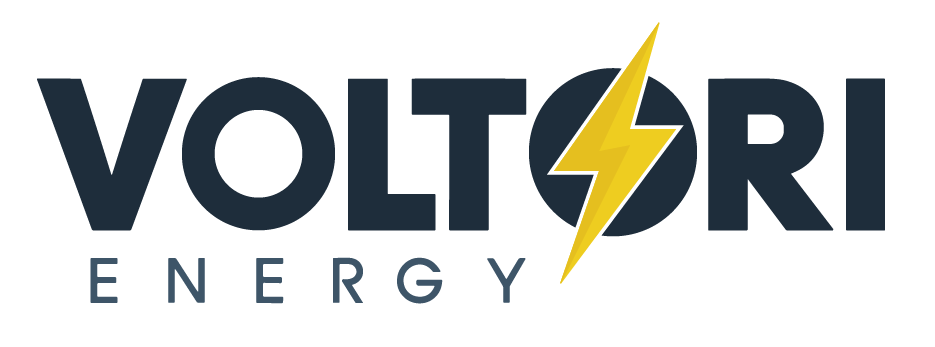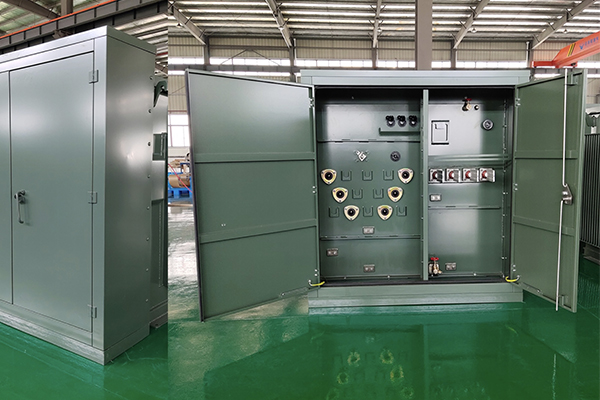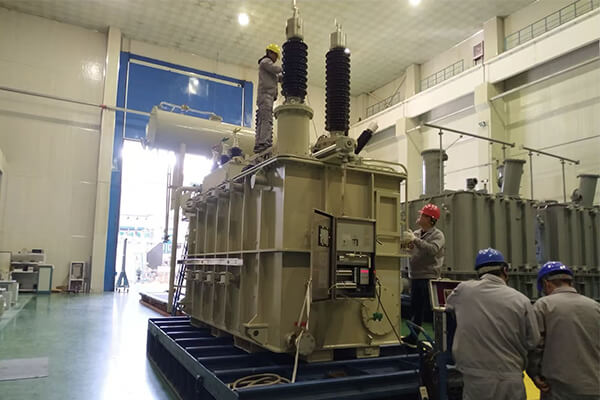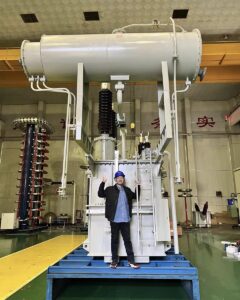Power transformers in Canada often create confusion and costly mistakes for project managers. Without the right transformer specifications for our unique Canadian environment, renewable energy projects face delays, failures, and budget overruns.
A power transformer for Canadian electrical systems is a specialized electrical device that transfers energy between circuits by electromagnetic induction, specifically designed to withstand Canada's extreme temperatures (-40°C to +40°C), meet provincial utility requirements, and operate reliably within Canada's predominantly 120/240V 60Hz electrical system.
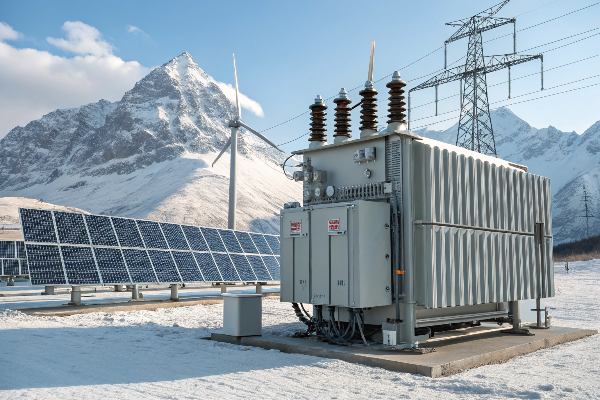
In my years of experience with Canadian renewable energy projects, I've noticed power transformers are frequently misunderstood as simple voltage conversion devices. They're actually the critical backbone of our entire electrical infrastructure. Many clients approach me confused about transformer specifications because they don't fully grasp the unique Canadian context. Let me break down what makes power transformers so essential for our electrical systems across the country.
What is the Purpose of a Power Transformer?
Are you losing efficiency in your energy system due to improper voltage levels? This common problem affects performance, safety, and ultimately your bottom line.
A power transformer's primary purpose is to efficiently change voltage levels between circuits while maintaining the same frequency. In Canadian applications, transformers enable electricity to travel long distances at high voltages (reducing power loss) before being stepped down to safer levels for residential and commercial use.
 process Power transformer functionality diagram](https://voltoritransformer.com/wp-content/uploads/2025/08/image-2-power-transformer-functionality-diagra.png)
Power transformers serve multiple critical functions beyond simple voltage transformation. First, they enable efficient power transmission across Canada's vast geography. By stepping up voltage for long-distance transmission, they minimize energy losses that would otherwise make our grid economically unfeasible.
The Canadian electrical landscape presents unique challenges that directly impact transformer design and selection. Our extreme temperature variations (-40°C to +40°C) demand specialized transformer construction that many standard models cannot handle. Transformer oil becomes a key factor here - I've witnessed imported transformers with inadequate insulating oil fail during their first Canadian winter.
Power transformers also provide essential electrical isolation between circuits, enhancing safety by preventing dangerous current flows between systems. This isolation function protects both equipment and personnel throughout our electrical network. Additionally, modern Canadian transformers incorporate advanced protection mechanisms against common electrical disturbances like voltage spikes, harmonics, and phase imbalances, which are particularly important for sensitive renewable energy installations across our northern climate.
Voltage Transformation Capabilities
| Transformer Type | Input Voltage | Output Voltage | Typical Canadian Application |
|---|---|---|---|
| Step-Up | Low Voltage | High Voltage | Renewable generation sites |
| Step-Down | High Voltage | Medium/Low Voltage | Distribution substations |
| Isolation | Various | Various | Safety & equipment protection |
What Electrical System is Used in Canada?
Are your imported electrical components failing prematurely in Canadian conditions? Understanding our national standards could save you thousands in replacement costs.
Canada operates on a 120/240V 60Hz electrical system, using a split-phase system for residential power and three-phase systems for commercial and industrial applications. All power equipment, including transformers, must be certified to Canadian standards (typically CSA or cUL) to ensure safety and compatibility.
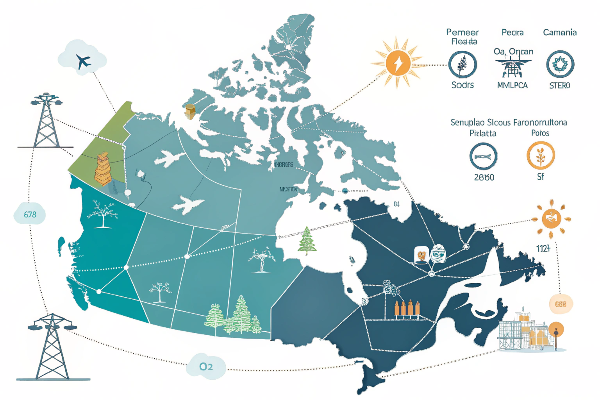
The Canadian electrical system has several distinctive characteristics that directly affect power transformer design and implementation across our provinces and territories. What's often overlooked is that Canadian utility requirements vary significantly by region. BC Hydro, Hydro-Québec, and Ontario's IESO all have different interconnection standards that directly impact transformer specifications for grid-connected projects.
Our grid operates as a collective of provincial systems, somewhat interconnected but largely managed independently - unlike the more unified approach in many European countries. This creates unique challenges for transformer compatibility and integration. Most Canadian residential power uses a 120/240V split-phase system delivered by local distribution transformers, while our industrial facilities typically rely on 347/600V three-phase power.
Climate considerations cannot be underestimated when selecting transformers for Canadian applications. Our expansive geography experiences some of the world's most extreme weather conditions. In northern regions, transformers must start reliably at -40°C while handling summer temperatures that can exceed 35°C. This temperature range affects insulation systems, cooling methods, and material selection for all transformer components. Additionally, coastal areas require enhanced corrosion protection, while urban centers need transformers with improved electromagnetic compatibility characteristics to prevent interference with sensitive equipment.
Canadian Provincial Voltage Standards
| Province | Common Distribution Voltage | Special Requirements |
|---|---|---|
| British Columbia | 25kV three-phase | Seismic certification |
| Alberta | 14.4kV three-phase | Cold weather rating (-45°C) |
| Ontario | 27.6kV three-phase | Smart grid compatibility |
| Quebec | 25kV three-phase | French language documentation |
What is the Most Common Power Transformer in Canada?
Are you overwhelmed by transformer options and unsure which type dominates the Canadian market? This confusion could lead to compatibility issues and project delays.
Liquid-immersed, medium-voltage distribution transformers are the most common power transformers in Canada. These units typically range from 25kVA to 10MVA and are designed to step down transmission voltages (usually 4.16kV to 34.5kV) to usable distribution levels for commercial and residential applications.
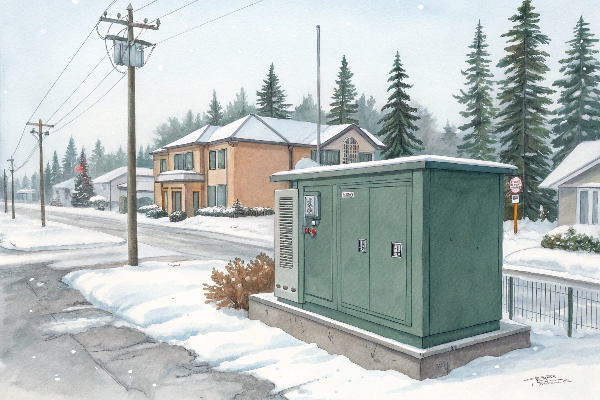
In my professional assessment, liquid-immersed transformers remain the most reliable option for Canadian renewable installations despite the growing popularity of dry-type alternatives. They handle our temperature extremes better and typically last 5-10 years longer in field conditions. When properly maintained, these transformers can operate efficiently for 25-30 years even in our challenging climate.
The mineral oil used in these transformers serves multiple critical functions - it provides superior insulation properties, efficient heat transfer, and protection against moisture. For extreme cold regions like northern Alberta or Yukon, specialized transformer oils with pour points below -40°C are essential. Some newer environmentally friendly alternatives like natural esters or synthetic oils are gaining traction, but mineral oil remains dominant due to its proven reliability in our demanding conditions.
Pad-mounted transformers are particularly common in newer Canadian developments, where underground distribution systems are preferred for aesthetic and reliability reasons. These units are designed with specialized tamper-resistant enclosures to withstand both environmental challenges and potential physical interference. For remote Canadian locations, pole-mounted distribution transformers continue to be widely used due to their cost-effectiveness and easier maintenance access during severe weather events.
Comparison of Common Canadian Transformer Types
| Type | Size Range | Cooling Method | Temperature Rating | Typical Location |
|---|---|---|---|---|
| Pad-Mounted | 75-2500kVA | ONAN | -40°C to +40°C | Urban/Suburban |
| Pole-Mounted | 10-167kVA | ONAN | -45°C to +40°C | Rural/Remote |
| Substation | 5-100MVA | ONAF/OFAF | -40°C to +40°C | Grid Infrastructure |
What is a Transformer in an Electrical Power System?
Struggling to understand how transformers fit into the broader electrical ecosystem? This knowledge gap can lead to poorly optimized power systems and increased operational costs.
In an electrical power system, a transformer is a critical component that enables efficient power flow between generation, transmission, and distribution networks. It allows electricity to be generated at optimal voltages, transmitted at high voltages to minimize losses, and distributed at safe, usable voltages required by end users.
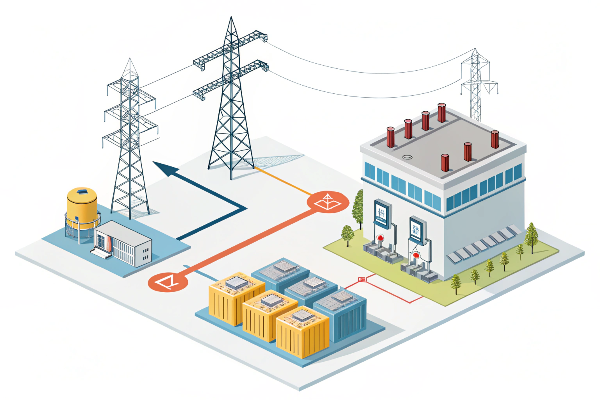
Transformers are the unsung heroes of our electrical power system, functioning as the vital connectors between each stage of electricity's journey from generation to consumption. The future of Canadian transformers lies in smart, IoT-enabled units that can dynamically respond to grid conditions. This is especially important as we integrate more variable renewable sources like wind and solar across our provincial grids.
In Canada's expansive power network, transformers serve distinct roles at different points. At generation facilities, including our numerous hydroelectric plants, step-up transformers increase voltage from generator levels (typically 13.8-24kV) to transmission levels (115-500kV). Along transmission paths that span our vast territory, autotransformers may adjust voltages between different transmission circuits without full electrical isolation. At substations serving communities, step-down transformers reduce voltage to distribution levels (4-35kV), and finally, distribution transformers further step down voltages to customer utilization levels.
Modern Canadian power system transformers increasingly incorporate advanced monitoring features that continuously assess oil condition, winding temperatures, and load patterns. This real-time data helps utilities prevent failures before they occur—particularly valuable during our harsh winter conditions when transformer failures would be most catastrophic. Additionally, with Canada's commitment to renewable energy integration, specialized transformers with enhanced harmonics handling capabilities are becoming more common to address the unique electrical characteristics of wind and solar generation. These specialized units feature modified core designs and enhanced cooling systems to handle the variable loads typical of renewable energy sources.
Transformer Functions Across the Power System
| System Stage | Transformer Type | Voltage Transformation | Key Function |
|---|---|---|---|
| Generation | Step-up | 13.8-24kV to 115-500kV | Enable efficient transmission |
| Transmission | Autotransformer | 500kV to 230kV (example) | Interconnect transmission networks |
| Substation | Step-down | 230kV to 25kV (example) | Prepare for local distribution |
| Distribution | Distribution | 25kV to 120/240V | Deliver usable power to consumers |
Conclusion
Power transformers are the essential backbone of Canadian electrical systems, enabling efficient energy delivery across our vast country while meeting our unique environmental and regulatory challenges. For reliable, custom-engineered transformers specifically designed for Canadian conditions, Voltori Energy delivers expert solutions for all your renewable energy projects.
